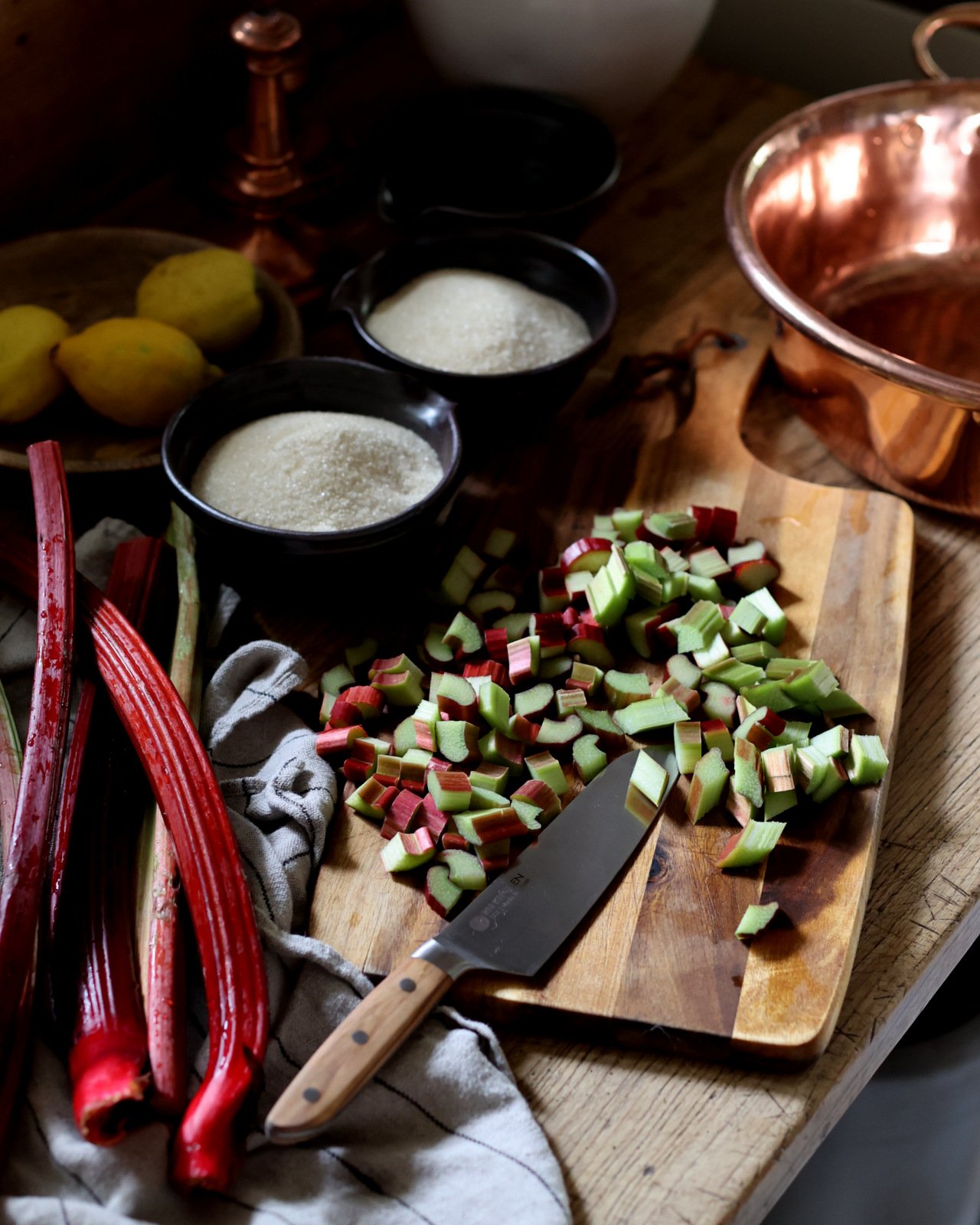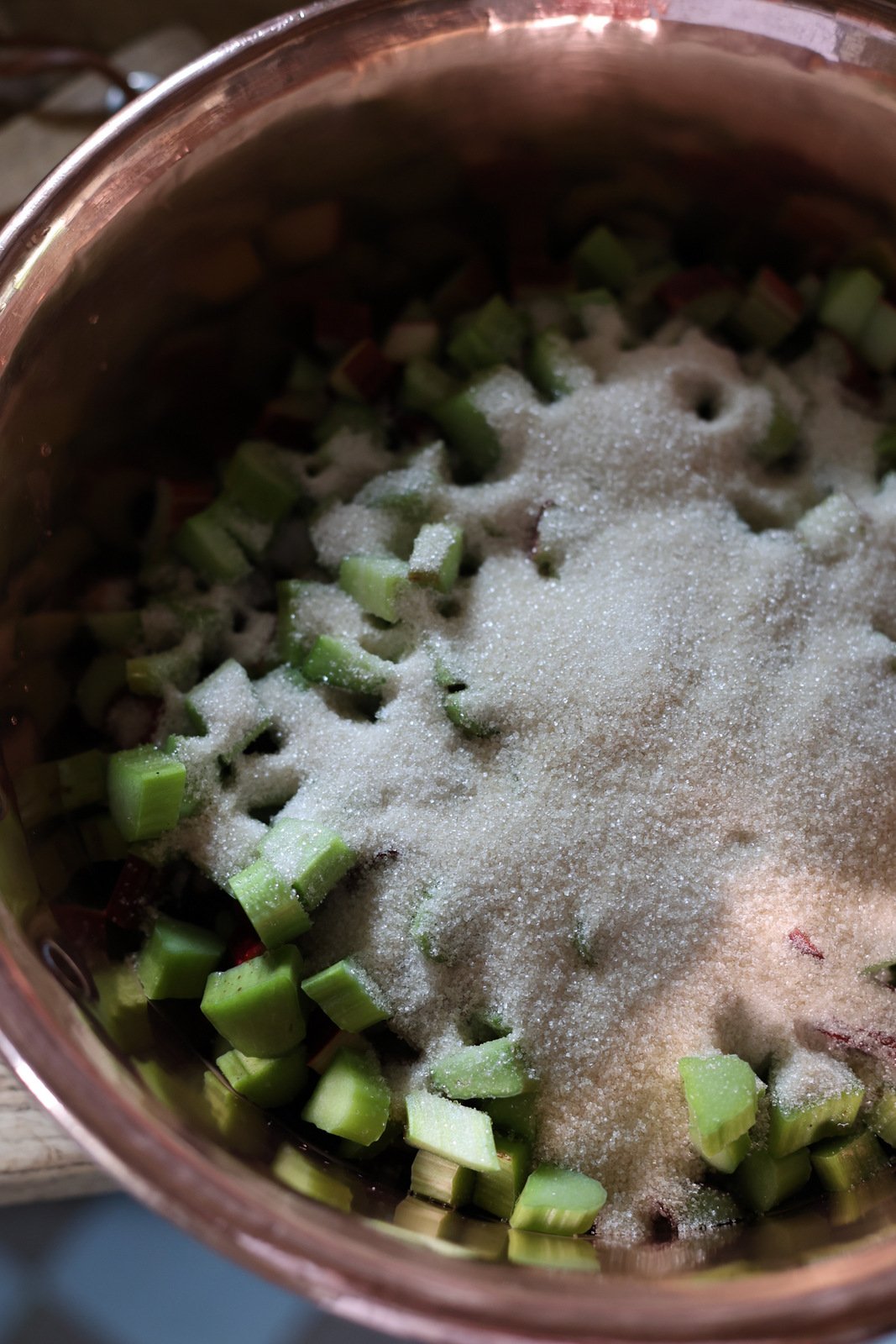Confite de Rhubarbe
What I love about this recipe is that it honors a generations old practice of slow cooking using the heat from the stove in times when one had to utilize what was available. And even more than that, the finished ‘confite’ is a deeply jewel colored and wonderfully textured treat, that can be used simply on toast, or more decadently in a dessert or pastry.
Part 1 - Mise-en-place
The basic ingredients
2 kilos of rhubarb (approx. 4 lbs)
2 kilos of organic sugar (approx. 4 lbs)
Or equal parts of each if you want to make more or less …
Additions:
The zest or peel from one lemon
Whole vanilla bean
Part 2 - Method
Wash and prepare the rhubarb by removing the leaves and ends and chopping into uniform pieces. Using a copper confiture pan, layer the rhubarb and sugar. Cover and set on the back of the stove and leave for 24 hours. During this time the rhubarb will release juices to begin the process.
Part 3 - SLOW COOKING
As Nigella mentions, this part may seem laborious, but it really isn’t. Place the confiture pan on a small burner and begin heating on medium flame or low if using electric coil heat. Warm the rhubarb and sugar slowly, not allowing it to bubble or boil, for around 20 - 30 minutes. It’s best not to cover it while simmering as often you might lose track and it could heat up too much. After it has slowly warmed, turn off the heat, cover, and set aside. That’s all for the first day.
The next morning, put the pan back on the small burner and heat for 15 minutes. (Be sure to set a timer so that you don’t forget!) Then turn off the heat, cover, and leave to sit. A few hours later, turn it on again and cook it in the same way. Repeat, every few hours and then let rest again overnight.
On day three you will heat it slightly longer each time and allow it to bubble before turning it off. This part of the recipe is done completely by sight. Once the confiture is bright in color and the syrup is thick, it is done. If canning, please be sure to bring it to a boil before processing.
Note, that if you over-cook, it will still be delicious, but will be cloudier and paler in color. The goal is that the rhubarb still has texture and is ‘candied’ rather than mushy.
If preserving - follow the directions and methods for standard jam making.
Confit is any type of food that is cooked slowly over a long period as a method of preservation. Confit as a cooking term describes when food is cooked in grease, oil or sugar water, at a lower temperature.
This ‘confit’ is perfect for your morning ‘tartine’, so delicious as a topping for Greek yogurt and perfect for summer fruit tarts and dessert pastry.
TIP:
I always add lemon peel (not juice) to add a fresh subtle flavor which adds brightness to the rhubarb’s natural tartness. You can also use a vanilla bean, sliced and added in the first cooking session and then removed, for a special touch.
Nigella’s story …
“My grandmother came up with this method because she was keeping the electrical bills down so whenever she was done cooking something (and she was always cooking something, especially in the summer) she would turn off the heat and put the jam over to use the extra heat.”
Rabbit hill kitchen
Our signature chef's knife created for my kitchen at Rabbit Hill. Available as a limited edition.
Now available from Nakano Knives. Click the button below to purchase yours and use code RHKNAKANO at check out!
About the Author
Writer, photographer & foodie living on a farm in Normandy called Rabbit Hill, I also run a French lifestyle online pop-up shop and offer French foodie workshops.
Learn to make dishes like this at Rabbit Hill Workshops
Our workshops bring you the best food that France has to offer, through visits to local markets and French cooking lessons in beautiful Normandy.
Get recipes like this delivered to your inbox
Sign up to our Notes from Rabbit Hill newsletter to receive a regular dose of French lifestyle notes, recipes and photography.






